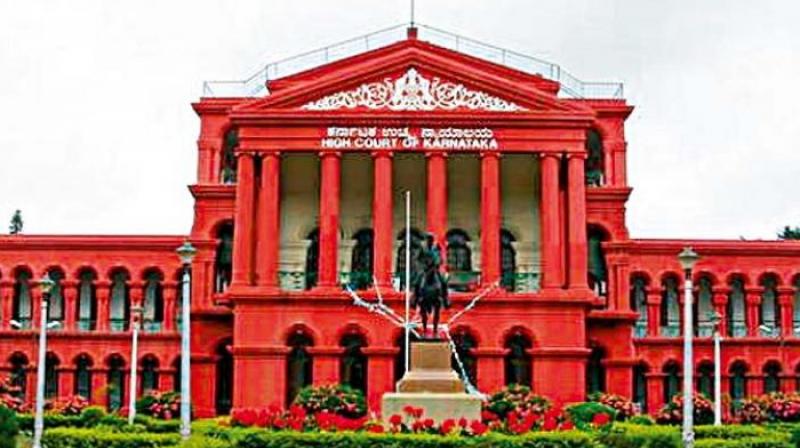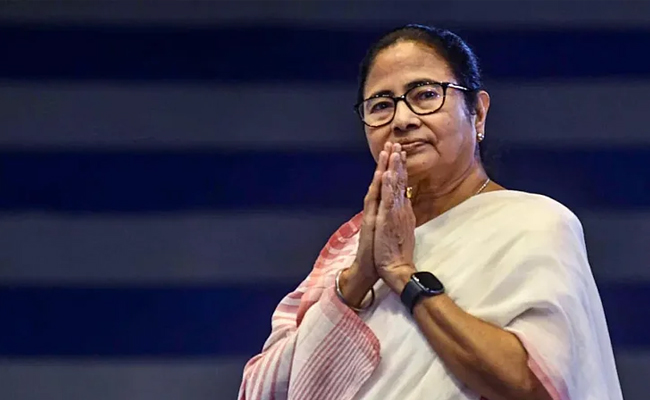Bengaluru, Apr 28: The High Court of Karnataka has recommended that three more Special Courts for National Investigation Agency (NIA) cases be established in three revenue divisions of Karnataka, within the next six months.
"We hereby recommend the State Government to constitute/establish three Special Courts for trial of NIA cases in Mysore Division, Belagavi Division and Kalburgi Division within a period of six months from the date of receipt of copy of the order," the Division Bench of B Veerappa and Justice Venkatesh Naik T said in their judgment dismissing the appeals filed by 41 accused in the Hubballi riots case.
It would "ensure speedy trial and disposal of the NIA cases" in order to make justice accessible to the needy and "to fulfil the scope and object of the Unlawful Activities (Prevention) Act", the bench said.
A Special Court had rejected the bail pleas of the accused after which they approached the HC in two separate petitions.
In its common order on the two petitions, the HC said in its April 20 judgment, "On re-appreciation of the entire material on record, we answer the point raised in these criminal appeals in the negative holding that the appellants/accused have not made out a case to interfere with the impugned order passed by the Special Court rejecting their applications for regular bail in the peculiar facts and circumstances of the case."
While dealing with the bail petitions, the HC also noted that very old NIA cases had also been pending.
"As of today, for the entire State, the Government has established only one Special Court at Bangalore to deal with the cases under National Investigation Agency Act, 2008. By careful perusal of the statistical data, it is clearly depicted that NIA cases which are more than 8 to 9 years old are pending," it said.
The Court said it was high time that new courts were established.
"If the newly proposed Special Courts are not constituted/established, one Special Court in the entire State would be overburdened and will lead to inordinate delay in trial and disposal of NIA cases, which is against the Constitutional mandate as contemplated under Articles 14 and 21 of the Constitution of India," it said.
In Karnataka, Bengaluru Division consists of nine districts; Mysore Division consists eight districts, Belagavi Division consists seven districts and Kalburgi Division consists of six districts, the HC noted.
The HC also listed the number of cases pending in the existing Special Court. It found that one case was nine years old, two cases each were eight and seven years old, six cases were five years old, three cases six years old, eight cases two years old and five cases one year old.
"It is high time for the State Government to fulfill the scope and object of the UA(P) Act and ensure speedy trial and disposal by constituting/establishing three more Special Courts for trial of NIA cases in other revenue Divisions of Karnataka," the HC said.
The HC was hearing the appeal of 41 accused in the Hubballi riots on the night of April 16, 2022.
A complaint had been filed against a person for his Whatsapp status showing a saffron flag on a masjid.
Hundreds of people gathered in front of the Hubballi rural police station demanding action. They allegedly, with the "intention of committing the murder" of the police personnel, "assaulted with clubs, pelted stones and threw chappals on the police and caused injuries, destroyed the vehicles of police and public and government properties."
The police booked several people for the riots, and later the case was handed over to the NIA. The bail petitions of the accused were rejected by the Special Court on December 26, 2022 after which they approached the HC.
Rejecting their plea, the HC said, "Though several contentions urged by the learned counsel for the appellants for granting bail and the learned SPP for rejecting the bail, the fact remains that the accused have not made out any prima facie case to grant bail."
Let the Truth be known. If you read VB and like VB, please be a VB Supporter and Help us deliver the Truth to one and all.
Thiruvananthapuram (PTI): Buoyed by the strong performance of the Congress-led UDF in the local body polls, KPCC president Sunny Joseph said on Saturday that the front's results indicated the people had rejected the LDF government.
According to early trends, the UDF was leading in more grama panchayats, block panchayats, municipalities and corporations than the LDF.
The local body polls were held in two phases in the state earlier this week.
ALSO READ: Cong candidate who moved Kerala HC for name reinstatement in voter list, wins
Speaking to reporters here, Joseph said the people of Kerala had extended their support to the UDF.
"We could expose the LDF government’s anti-people stance and the people understood it. The LDF’s fake propaganda was rejected by the people. The UDF is moving towards a historic victory," he said.
He said a united effort, proper preparations, good candidate selection and hard work had resulted in the Congress and the UDF’s victory in the elections.
Asked about the prospects in the Thiruvananthapuram Corporation, Joseph said the party was studying the matter and would comment later.
LDF convenor T P Ramakrishnan said the results would be closely examined.
According to him, the government had done everything possible for the people.
"Why such a verdict happened will be examined at the micro level. People’s opinion will be considered and further steps will be taken," he said.
He added that decisions would be taken after analysing the results. "If any corrective measures are required, we will initiate them and move forward," he said.
AICC leader K C Venugopal said the results showed that people had begun ousting those who, he alleged, were responsible for the loss of gold at Lord Ayyappa’s temple.
"This trend will continue in the Assembly elections as well. It is an indication that the people are ready to bring down the LDF government," he said.
Venugopal said the UDF had registered victories even in CPI(M) and LDF strongholds.
"I congratulate all UDF workers for their hard work. Congress workers and leaders worked unitedly," he said.
Referring to remarks made by Chief Minister Pinarayi Vijayan against the Congress on polling day, Venugopal said the voters had responded through the verdict.
"I do not know whether the chief minister understands that the people are against him. Otherwise, he does not know the sentiment of the people. The state government cannot move an inch further," he said.
He said the results indicated a strong comeback for the UDF in Kerala.
Asked whether the Sabarimala gold loss issue had affected the LDF in the local polls, Venugopal said the CM and the CPI(M) state secretary did not take the issue seriously.
"We took a strong stand on the matter. The BJP played a foul game in it," he alleged.
On the BJP's role in the local body elections, Venugopal alleged that the party operated with the CPI(M) 's tacit support.
"The CPI(M) supported the central government on issues such as PM-SHRI, labour codes and corruption in national highway construction. The CPI(M) is facing ideological decline, and the state government’s policies are against the party’s own decisions," he said.
Meanwhile, LDF ally Kerala Congress (M) leader Jose K Mani said the party could not win all the wards it had expected in the elections.
He congratulated winners from all parties and said the party would closely examine the losses and identify shortcomings. "Later, we will take corrective measures," he added.
Senior Congress leader and MP Rajmohan Unnithan said the trends in the local body elections indicated that the UDF would return to power in the 2026 Assembly elections.
"We will win 111 seats as in 1977 and return to power in 2026. The anti-government sentiment of the people is reflected in the elections," he said.
Unnithan said the people were disturbed and unhappy with the present government.
"The trend indicates the end of the LDF government," he added.
CPI(M) MLA M M Mani said the people had shown ingratitude towards the LDF despite benefiting from welfare schemes.
"After receiving all welfare schemes and living comfortably, people voted against us due to some temporary sentiments. Is that not ingratitude," he asked.
Mani said no such welfare initiatives had taken place in Kerala earlier.
"People are receiving pensions and have enough to eat. Even after getting all this, they voted against us. This is what can be called ingratitude," he said.
Muslim League state president Panakkad Sayyid Sadiq Ali Shihab Thangal said the results were beyond expectations.
"The outcome points towards the Secretariat in Thiruvananthapuram, indicating that a change of government is imminent. We are going to win the Assembly election," he said.





